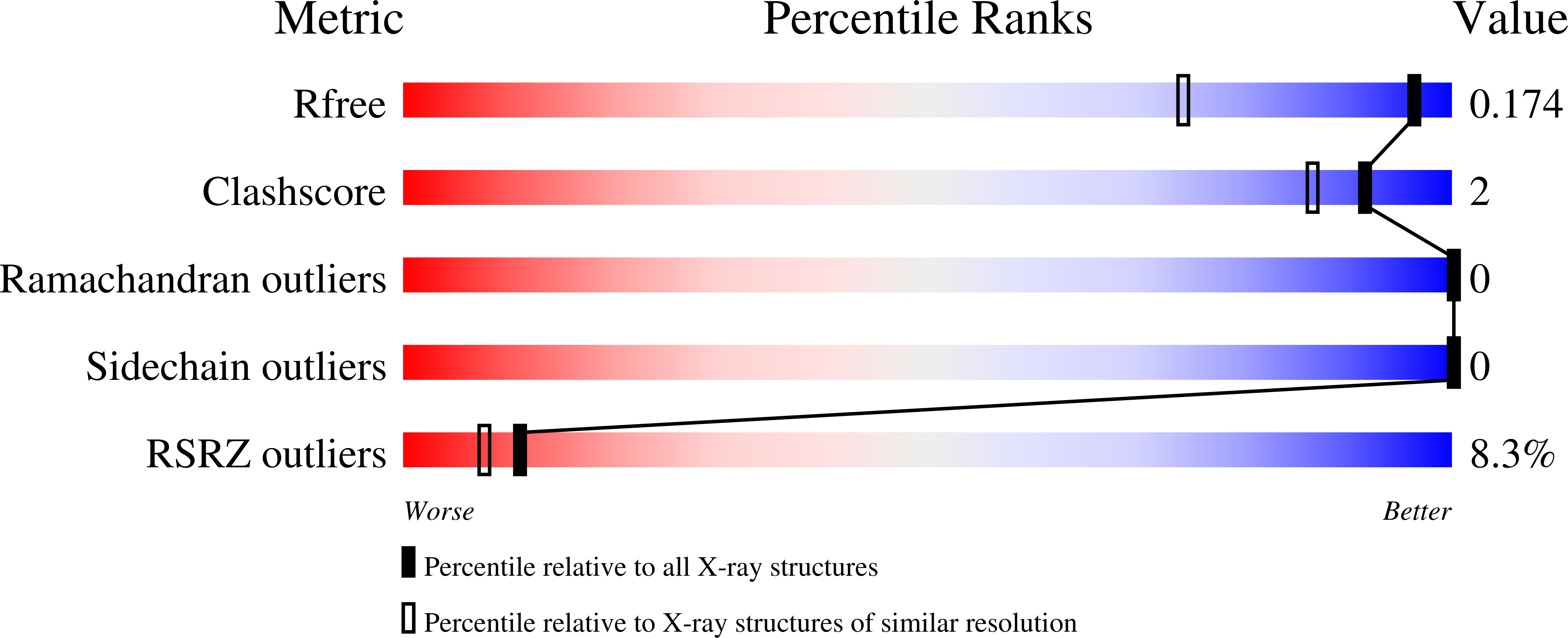Molecular basis of beta-amyloid oligomer recognition with a conformational antibody fragment.
Morgado, I., Wieligmann, K., Bereza, M., Ronicke, R., Meinhardt, K., Annamalai, K., Baumann, M., Wacker, J., Hortschansky, P., Malesevic, M., Parthier, C., Mawrin, C., Schiene-Fischer, C., Reymann, K.G., Stubbs, M.T., Balbach, J., Gorlach, M., Horn, U., Fandrich, M.(2012) Proc Natl Acad Sci U S A 109: 12503-12508
- PubMed: 22814377
- DOI: https://doi.org/10.1073/pnas.1206433109
- Primary Citation of Related Structures:
3TPK - PubMed Abstract:
Oligomers are intermediates of the β-amyloid (Aβ) peptide fibrillogenic pathway and are putative pathogenic culprits in Alzheimer's disease (AD). Here we report the biotechnological generation and biochemical characterization of an oligomer-specific antibody fragment, KW1. KW1 not only discriminates between oligomers and other Aβ conformations, such as fibrils or disaggregated peptide; it also differentiates between different types of Aβ oligomers, such as those formed by Aβ (1-40) and Aβ (1-42) peptide. This high selectivity of binding contrasts sharply with many other conformational antibodies that interact with a large number of structurally analogous but sequentially different antigens. X-ray crystallography, NMR spectroscopy, and peptide array measurements imply that KW1 recognizes oligomers through a hydrophobic and significantly aromatic surface motif that includes Aβ residues 18-20. KW1-positive oligomers occur in human AD brain samples and induce synaptic dysfunctions in living brain tissues. Bivalent KW1 potently neutralizes this effect and interferes with Aβ assembly. By altering a specific step of the fibrillogenic cascade, it prevents the formation of mature Aβ fibrils and induces the accumulation of nonfibrillar aggregates. Our data illuminate significant mechanistic differences in oligomeric and fibril recognition and suggest the considerable potential of KW1 in future studies to detect or inhibit specific types of Aβ conformers.
Organizational Affiliation:
Institute for Biochemistry and Biotechnology, Martin Luther University Halle-Wittenberg, 06120 Halle, Saale, Germany.
















